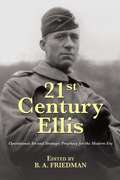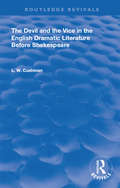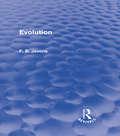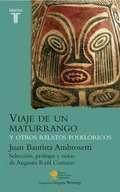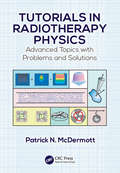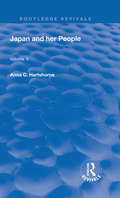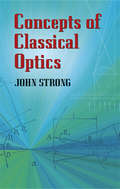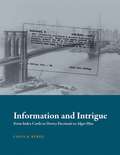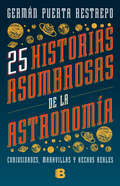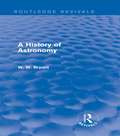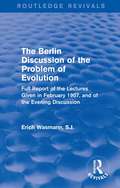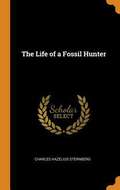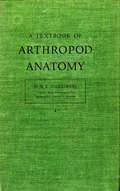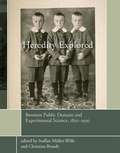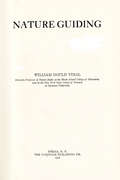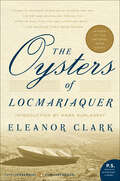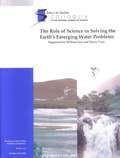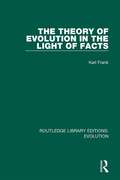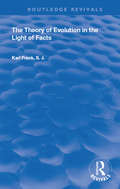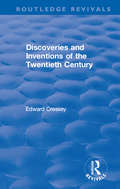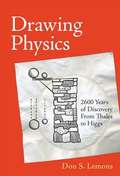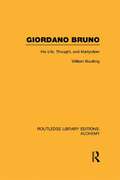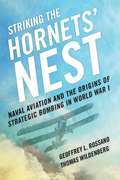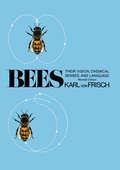- Table View
- List View
21st Century Ellis
by Edited by B. A. FriedmanFor years, the Marine Corps has touted the prescience of Lieutenant Colonel "Pete” Ellis, USMC, who predicted in 1921 that the United States would fight Japan and how the Pacific Theater would be won. Now, for the first time, those predictions and other works by the "amphibious prophet” are available in print. Included is two works by Ellis on naval and amphibious operations, including Advanced Base Operations in Micronesia, the study of tactics and operations in the Pacific Ocean that the United States Navy and Marine Corps would use to win the war against Imperial Japan. Ellis describes the form and functions of a modern Marine Corps designed to win its Nation’s battles. Ellis’ ideas about how the Marine Corps should fight are still in use throughout the world today. Ellis’ ideas on amphibious operations are well known, but his ideas on counterinsurgency and conventional war have been overshadowed and forgotten. Ellis wrote two articles based on his warfighting experiences in the Philippines and as part of the American Expeditionary Force in Europe during World War I. These articles, last published in the early 1920’s, are both republished in this book and show Ellis as a prescient thinker who was ahead of his time. Ellis identifies concepts that the U. S. military struggles with even today, and that other thinkers would not identify for decades after Ellis’ death. Also included are six essays by the editor, introducing the ideas of Pete Ellis and putting them in a modern context. As the United States turns its focus to the Pacific, Ellis’ ideas can inform policymakers on the dynamics of strategy and warfare in the vast reaches of the Pacific Ocean. Edited by Captain B. A. Friedman, USMC, 21st Century Ellis reveals the strategic insights of Pete Ellis for then and now.
The Devil and the Vice in the English Dramatic Literature Before Shakespeare (Routledge Revivals)
by L. W. CushmanOriginally published in 1900, this book was the first investigation of the devil and the Vice as dramatic figures, and a study of these figures led to a new view of the subject: it is, in brief, that the appearance of the devil in the non-dramatic as well as in the dramatic literature is limited to a definite range. As a dramatic figure the devil falls more and more into the background and the Vice is distinct in origin and function from the devil.
Evolution (Routledge Revivals)
by F. B. JevonsFirst published in 1900, this philosophical essay on Evolution questions how the acceptance of Evolution as scientific should influence the thoughts and actions of humankind from the perspective of morality and moral conduct. In his discussion, Frank B. Jevons deals with such subjects as pessimism and optimism towards evolutionary theory, the laws of motion and matter, and the importance of scientific evidence.
El hombre, su época y su obra folclórica
by Juan Bautista AmbrosettiA medida que más se ahonda en el conocimiento de la vida y la obra del argentino Ambrosetti, más nítida surge la imagen de un hombre de ciencia auténtico: vocación indudable, revelada con temprana precocidad; espíritu observador; mente sistemática; hábitos metódicos; amor al estudio, tanto en los libros como en la vida y en la naturaleza; rigor en la documentación de los datos y en la legitimidad de las conclusiones, noblemente rectificadas cuando nuevos aportes lo convencían de lo erróneo de una interpretación; tendencia a especializarse partiendo de una amplia base de cultura general; laboriosidad incansable y actitud humilde de perenne estudioso... Pero no fue, a Dios gracias, sólo eso. No se deshumanizó en aras de la ciencia. El "loco de los cacharros" no echó en olvido al hombre que los modeló con esfuerzo, los decoró con arte y los usó con provecho. Llegó hasta el pueblo no para ver a cada individuo como un coleóptero pinchado en un corcho, sino como a un ser humano, en cuyo microcosmos no desdeñó penetrar con interés y a veces con emoción. Esta capacidad de conmoverse lo eleva de la destreza técnica y de la erudición fría a la personalidad de un sabio integral. Ante el Valle de Namuncurá en la sierra de Lihú Calel, imaginando la resurrección de los indios quilmes entre remolinos de polvo y fragores de tormenta, extrayendo restos humanos en la primera tumba abierta en el Pucará de Tilcara, el arqueólogo siente, en el fondo de su alma, que la ciencia no ha muerto a la poesía.
Tutorials in Radiotherapy Physics: Advanced Topics with Problems and Solutions
by Patrick N. McDermottThe Topics Every Medical Physicist Should Know Tutorials in Radiotherapy Physics: Advanced Topics with Problems and Solutions covers selected advanced topics that are not thoroughly discussed in any of the standard medical physics texts. The book brings together material from a large variety of sources, avoiding the need for you to search through and digest the vast research literature. The topics are mathematically developed from first principles using consistent notation. Clear Derivations and In-Depth Explanations The book offers insight into the physics of electron acceleration in linear accelerators and presents an introduction to the study of proton therapy. It then describes the predominant method of clinical photon dose computation: convolution and superposition dose calculation algorithms. It also discusses the Boltzmann transport equation, a potentially fast and accurate method of dose calculation that is an alternative to the Monte Carlo method. This discussion considers Fermi–Eyges theory, which is widely used for electron dose calculations. The book concludes with a step-by-step mathematical development of tumor control and normal tissue complication probability models. Each chapter includes problems with solutions given in the back of the book. Prepares You to Explore Cutting-Edge Research This guide provides you with the foundation to read review articles on the topics. It can be used for self-study, in graduate medical physics and physics residency programs, or in vendor training for linacs and treatment planning systems.
Japan and Her People: Vol. II (Routledge Revivals)
by Anna C. HartshorneThis book provides an overview of Japan in late 19th century and its history. It also provides an insight of Japanese society as it moved from the traditional Edo period lifestyle towards industrialization and explores Japan's lifestyles, customs, culture, and everyday behavior.
Concepts of Classical Optics
by John StrongAn intermediate course in optics, this volume explores both experimental and theoretical concepts, offering practical knowledge of geometrical optics that will enhance students' comprehension of any relevant applied science. Its exposition of the concepts of classical optics is presented with a minimum of mathematical detail but presumes some knowledge of calculus, vectors, and complex numbers.Subjects include light as wave motion; superposition of wave motions; electromagnetic waves; interaction of light and matter; velocities and scattering of light; polarized light and dielectric boundaries; double refraction; and the interference of two sources laterally separated. Additional topics cover Fresnel and Fraunhofer diffraction; coherent sources separated in depth; applications of physical optics; images of points by single surfaces and by systems of surfaces; magnification, aperture, and field; and image defects.Illustrative problems appear throughout the text, assuring students of an opportunity to attain a full understanding of the material. The appendixes feature short topics of lively research interest that can be used simply for reference or formally incorporated by the instructor into the course.
Information and Intrigue
by Colin B. BurkeIn Information and Intrigue Colin Burke tells the story of one man's plan to revolutionize the world's science information systems and how science itself became enmeshed with ideology and the institutions of modern liberalism. In the 1890s, the idealistic American Herbert Haviland Field established the Concilium Bibliographicum, a Switzerland-based science information service that sent millions of index cards to American and European scientists. Field's radical new idea was to index major ideas rather than books or documents. In his struggle to create and maintain his system, Field became entangled with nationalistic struggles over the control of science information, the new system of American philanthropy (powered by millionaires), the politics of an emerging American professional science, and in the efforts of another information visionary, Paul Otlet, to create a pre-digital worldwide database for all subjects. World War I shuttered the Concilium, and postwar efforts to revive it failed. Field himself died in the influenza epidemic of 1918. Burke carries the story into the next generation, however, describing the astonishingly varied career of Field's son, Noel, who became a diplomat, an information source for Soviet intelligence (as was his friend Alger Hiss), a secret World War II informant for Allen Dulles, and a prisoner of Stalin. Along the way, Burke touches on a range of topics, including the new entrepreneurial university, Soviet espionage in America, and further efforts to classify knowledge.
25 historias asombrosas de la Astronomía: Curiosidades, maravillas y hechos reales
by Germán Puerta¿QUÉ TIENEN QUE VER LA LUNA Y EL TITANIC? ¿QUIÉN INVENTÓ EL TELESCOPIO? ¿REALMENTE FUIMOS A LA LUNA? La Astronomía es una ciencia fundamental cuyo progreso ha estado estrechamente vinculado con el desarrollo cultural de la humanidad, además de ser la base del mundo moderno y del progreso tecnológico. Su historia está llena de curiosidades, hechos extraordinarios y divertidos, muchas veces fantásticos y exóticos, pero siempre ligados al afán del ser humano por entender el extraño y fabuloso mundo que habita. En este libro, el reconocido comunicador y divulgador científico Germán Puerta Restrepo, autor del clásico Guía para viajeros del cielo, nos presenta 25 episodios asombrosos que nos recuerdan la íntima y milenaria conexión que tenemos con los astros y su maravillosa facultad para sorprendernos
A History of Astronomy (Routledge Revivals)
by Walter W. BryantA History of Astronomy, first published in 1907, offers a comprehensive introduction to the steady development of the science since its inception in the ancient world up to the momentous progress of the nineteenth century. It includes biographical material relating to the most famous names in the study of astronomy – Copernicus, Galileo, Newton, Herschel – and their contributions, clear and accessible discussions of key discoveries, as well as detailing the incremental steps in technology with which many of the turning points in astronomy were intimately bound up.
The Berlin Discussion of the Problem of Evolution: Full Report of the Lectures Given in February 1907, and of the Evening Discussion
by Erich Wasmann, S.J.First published in 1909, this book collects the author’s lectures on the ‘problem of evolution’ and the resultant debate. The first considers the validity of the Theory of Evolution and whether it is in opposition to the Christian view of creation. The second examines the assertion that evolution harmonises only with Monism rather than Theism and which of the two views is preferable. It also looks at the popular identification of Darwinism with evolution, if it is scientific and the results this leads to. The third looks at man’s position in the problem of evolution — whether we are bound to bring in considerations higher than the zoological — and the evidence for our descent from ‘brutes’.
Life of a Fossil Hunter
by Charles Hazelius SternbergThis work has been selected by scholars as being culturally important and is part of the knowledge base of civilization as we know it. This work is in the public domain in the United States of America, and possibly other nations. Within the United States, you may freely copy and distribute this work, as no entity (individual or corporate) has a copyright on the body of the work. Scholars believe, and we concur, that this work is important enough to be preserved, reproduced, and made generally available to the public. To ensure a quality reading experience, this work has been proofread and republished using a format that seamlessly blends the original graphical elements with text in an easy-to-read typeface. We appreciate your support of the preservation process, and thank you for being an important part of keeping this knowledge alive and relevant.
Textbook of Arthropod Anatomy
by R. E. SnodgrassThe facts of arthropod structure are presented in clear, easy-to-use fashion in this text by R. E. Snodgrass. Examples of each of the classes from trilobites to insects are given. Musculature and mechanism of legs, eyes, feeding apparatus, body, head, and organs of digestion, excretion, and reproduction are described and illustrated.Over 640 drawings, most of them by the author, are arranged in 88 figures.
Heredity Explored: Between Public Domain and Experimental Science, 1850--1930
by Staffan Müller-Wille Christina BrandtThis book examines the wide range of scientific and social arenas in which the concept of inheritance gained relevance in the late nineteenth and early twentieth centuries. Although genetics emerged as a scientific discipline during this period, the idea of inheritance also played a role in a variety of medical, agricultural, industrial, and political contexts. The book, which follows an earlier collection, Heredity Produced (covering the period 1500 to 1870), addresses heredity in national debates over identity, kinship, and reproduction; biopolitical conceptions of heredity, degeneration, and gender; agro-industrial contexts for newly emerging genetic rationality; heredity and medical research; and the genealogical constructs and experimental systems of genetics that turned heredity into a representable and manipulable object. Taken together, the essays in Heredity Explored show that a history of heredity includes much more than the history of genetics, and that knowledge of heredity was always more than the knowledge formulated as Mendelism. It was the broader public discourse of heredity in all its contexts that made modern genetics possible.ContributorsCaroline Arni, Christophe Bonneuil, Christina Brandt, Luis Campos, Jean-Paul Gaudillière, Bernd Gausemeier, Jean Gayon, Veronika Lipphardt, Ilana Löwy, J. Andrew Mendelsohn, Staffan Müller-Wille, Diane B. Paul, Theodore M. Porter, Alain Pottage, Hans-Jörg Rheinberger, Marsha L. Richmond, Helga Satzinger, Judy Johns Schloegel, Alexander von Schwerin, Hamish G. Spencer, Ulrike Vedder
Nature Guiding
by William Gould VinalNature Guiding is the science of inculcating nature enthusiasm, nature principles, and nature facts into the spirit of individuals. "Doing" nature-study means observing, wondering, and solving problems. It could include collecting, building, measuring, painting, planning, writing, touching, experimenting or any of a wide range of other activities. Most importantly, it allows children to be "original investigators."This book is intended as a resource for teachers and students engaged in nature study at summer camps and in schools. William Gould Vinal believed that the teacher of nature study should be "in sympathy with the simple life and the country way," that the nature study should emphasize observation of the interactions of plants and animals in their environment, and not be reduced to matters of taxonomy and anatomy. In Nature Guiding, he offers advice to camp counselors and school teachers on incorporating nature study into everyday activities, as well as suggestions for parents and others about using visits to state and national parks to teach nature lore.
The Oysters of Locmariaquer
by Eleanor ClarkWinner of the National Book Award“What an elegant book this is, starting with that most elegant of creatures, the Belon oyster. . . . [Clark’s] fantastic blending of science and art, history and journalism, brings the appetite back for life and literature both.” — Los Angeles Times Book ReviewOn the northwest coast of France, just around the corner from the English Channel, is the little town of Locmariaquer (pronounced "loc-maria-care"). The inhabitants of this town have a special relationship to the world, for it is their efforts that maintain the supply of the famous Belon oysters, called les plates ("the flat ones"). A vivid account of the cultivation of Belon oysters and an excursion into the myths, legends, and rich, vibrant history of Brittany and its extraordinary people, The Oysters of Locmariaquer is also an unforgettable journey to the heart of a fascinating culture and the enthralling, accumulating drama of a unique devotion.
The Role of Science in Solving the Earth's Emerging Water Problems
by M. SacklerThe National Academies Press (NAP)--publisher for the National Academies--publishes more than 200 books a year offering the most authoritative views, definitive information, and groundbreaking recommendations on a wide range of topics in science, engineering, and health. Our books are unique in that they are authored by the nation's leading experts in every scientific field.
The Theory of Evolution in the Light of Facts (Routledge Library Editions: Evolution #3)
by Charles T. DrueryOriginally published in 1913, The Theory of Evolution in the Light of Facts examines the theory of Descent; the book is a time capsule of information, providing a record of the explorations into Darwinian theory during the first half of the 20th century. The book examines the contradictions which arose between technical work of the period and the assumptions surrounding the theory of evolution. The book aims to address that which is considered ‘certain’ or ‘probable’ from postulation in order to explain and clearly define the theory of evolution. It does this through hypothesising on the development of animals and plants using the systems of Darwin and Lamarck. This book will be of interest to anthropologists and historians of natural science alike.
The Theory of Evolution in the Light of Facts (Routledge Revivals)
by Karl FrankPublished in 1913: The object of the present work is to throw some light on the theory of Descent. Among many of the students of nature of the present day we perceive that greater and greater contradictions arise between the actual results of their technical work and that which they put forward as ‘postulates’ of the theory of Evolution.
Discoveries and Inventions of the Twentieth Century (Routledge Revivals)
by Edward CresseyThe book is written for those, young and old, who wish to have a non-technical account of the great scientific and material triumphs which man has achieved and is achieving in their own day; and it seemed desirable to give first place to those theories, facts, and accomplishments which are now exercising the greatest influence upon human life. For science exists not so much to tickle the intelligences of the few as to brighten the lot of the many.
Drawing Physics: 2,600 Years of Discovery From Thales to Higgs
by Don S. LemonsHumans have been trying to understand the physical universe since antiquity. Aristotle had one vision (the realm of the celestial spheres is perfect), and Einstein another (all motion is relativistic). More often than not, these different understandings begin with a simple drawing, a pre-mathematical picture of reality. Such drawings are a humble but effective tool of the physicist's craft, part of the tradition of thinking, teaching, and learning passed down through the centuries. This book uses drawings to help explain fifty-one key ideas of physics accessibly and engagingly. Don Lemons, a professor of physics and author of several physics books, pairs short, elegantly written essays with simple drawings that together convey important concepts from the history of physical science.Lemons proceeds chronologically, beginning with Thales' discovery of triangulation, the Pythagorean monocord, and Archimedes' explanation of balance. He continues through Leonardo's description of "earthshine" (the ghostly glow between the horns of a crescent moon), Kepler's laws of planetary motion, and Newton's cradle (suspended steel balls demonstrating by their collisions that for every action there is always an equal and opposite reaction). Reaching the twentieth and twenty-first centuries, Lemons explains the photoelectric effect, the hydrogen atom, general relativity, the global greenhouse effect, Higgs boson, and more. The essays place the science of the drawings in historical context -- describing, for example, Galileo's conflict with the Roman Catholic Church over his teaching that the sun is the center of the universe, the link between the discovery of electrical phenomena and the romanticism of William Wordsworth, and the shadow cast by the Great War over Einstein's discovery of relativity. Readers of Drawing Physics with little background in mathematics or physics will say, "Now I see, and now I understand."
Giordano Bruno: His Life, Thought, and Martyrdom (Routledge Library Editions: Alchemy)
by William BoultingThis comprehensive book outlines the life and works of an important revolutionary intellectual of the 16th Century. This book follows Bruno’s life and the development of his thought in the order in which he declared it. Giordano Bruno was an Italian Dominican friar, philosopher, mathematician and astronomer. He was burned at the stake after the Roman Inquisition found him guilty of heresy but his modern scientific thought and cosmology became very influential. His writings on science also showed interest in magic and alchemy and those are outlined in this book alongside what he is most remembered for - his place in the history of the relationship between science and faith.
Striking The Hornets' Nest: Naval Aviation And The Origins Of Strategic Bombing In World War I
by Geoffrey L. Rossano Thomas WildenbergStriking the Hornets’ Nest provides the first extensive analysis of the Northern Bombing Group (NBG), the Navy’s most innovative aviation initiative of World War I and one of the world’s first dedicated strategic bombing programs. Very little has been written about the Navy’s aviation activities in World War I and even less on the NBG. Standard studies of strategic bombing tend to focus on developments in the Royal Air Force or the U. S. Army Air Service. This work concentrates on the origins of strategic bombing in World War I, and the influence this phenomenon had on the Navy’s future use of the airplane. The NBG program faced enormous logistical and personnel challenges. Demands for aircraft, facilities, and personnel were daunting, and shipping shortages added to the seemingly endless delays in implementing the program. Despite the impediments, the Navy (and Marine Corps) triumphed over organizational hurdles and established a series of bases and depots in northern France and southern England in the late summer and early fall of 1918. Ironically, by the time the Navy was ready to commence bombing missions, the German retreat had caused abandonment of the submarine bases the NBG had been created to attack. The men involved in this program were pioneers, overcoming major obstacles only to find they were no longer needed. Though the Navy rapidly abandoned its use of strategic bombing after World War I, their brief experimentation directed the future use of aircraft in other branches of the armed forces. It is no coincidence that Robert Lovett, the young Navy reserve officer who developed much of the NBG program in 1918, spent the entire period of World War II as Assistant Secretary of War for Air where he played a crucial role organizing and equipping the strategic bombing campaign unleashed against Germany and Japan. Rossano and Wildenberg have provided a definitive study of the NBG, a subject that has been overlooked for too long.
Bees: Their Vision, Chemical Senses, and Language
by Karl Von Frisch Donald R GriffinOver half a century of brilliant scientific detective work, the Nobel Prize-winning biologist Karl von Frisch learned how the world, looks, smells, and tastes to a bee. More significantly, he discovered their dance language and their ability to use the sun as a compass. Intended to serve as an accessible introduction to one of the most fascinating areas of biology, Bees (first published in 1950 and revised in 1971), reported the startling results of his ingenious and revolutionary experiments with honeybees.In his revisions, von Frisch updated his discussion about the phylogenetic origin of the language of bees and also demonstrated that their color sense is greater than had been thought previously. He also took into consideration the electrophysiological experiments and electromicroscopic observations that have supplied more information on how the bee analyzes polarized light to orient itself and how the olfactory organs on the bee's antennae function.Now back in print after more than two decades, this classic and still-accurate account of the behavior patterns and sensory capacities of the honeybee remains a book "written with a simplicity, directness, and charm which all who know him will recognize as characteristic of its author. Any intelligent reader, without scientific training, can enjoy it."--Yale Review
